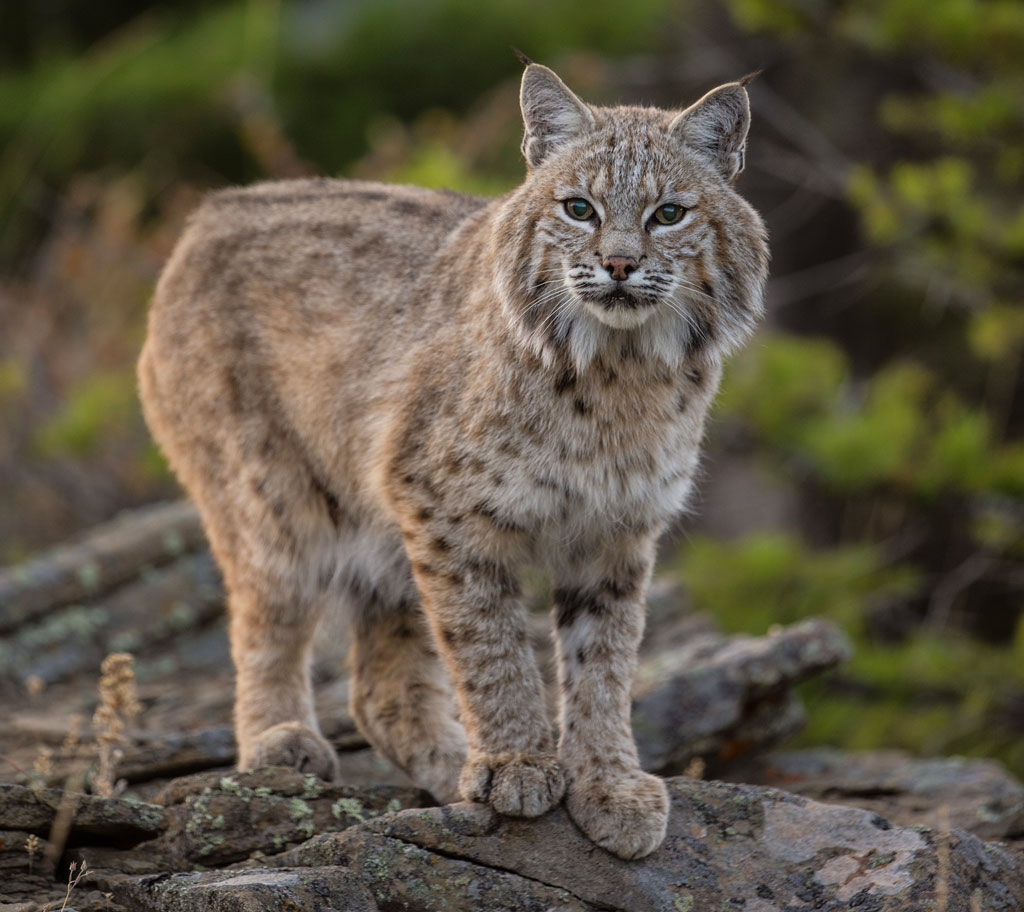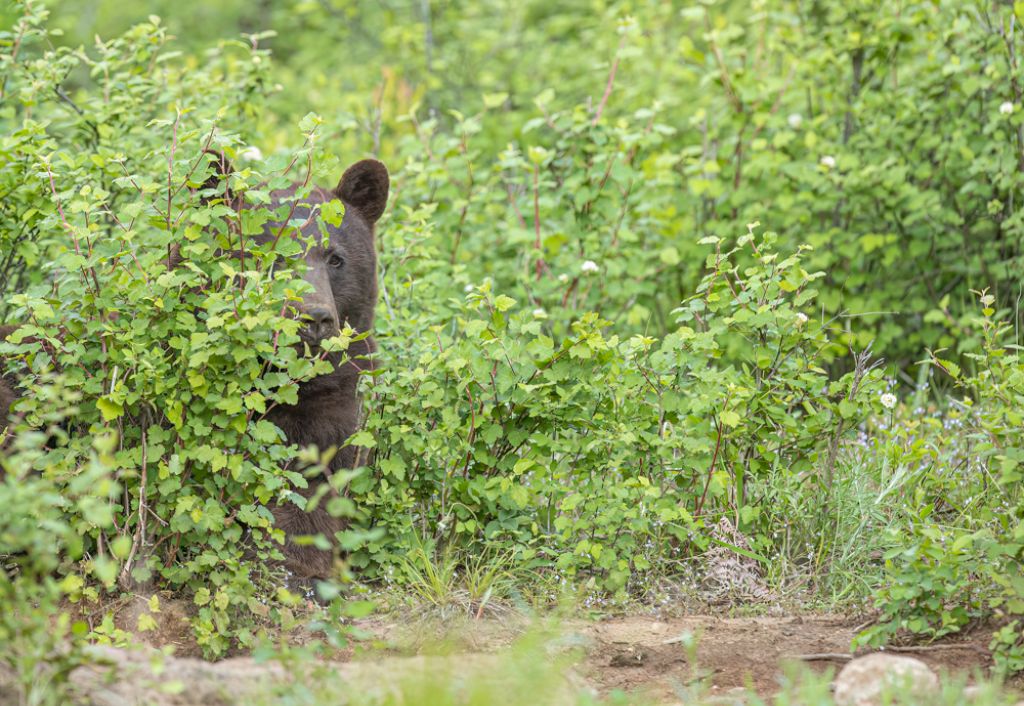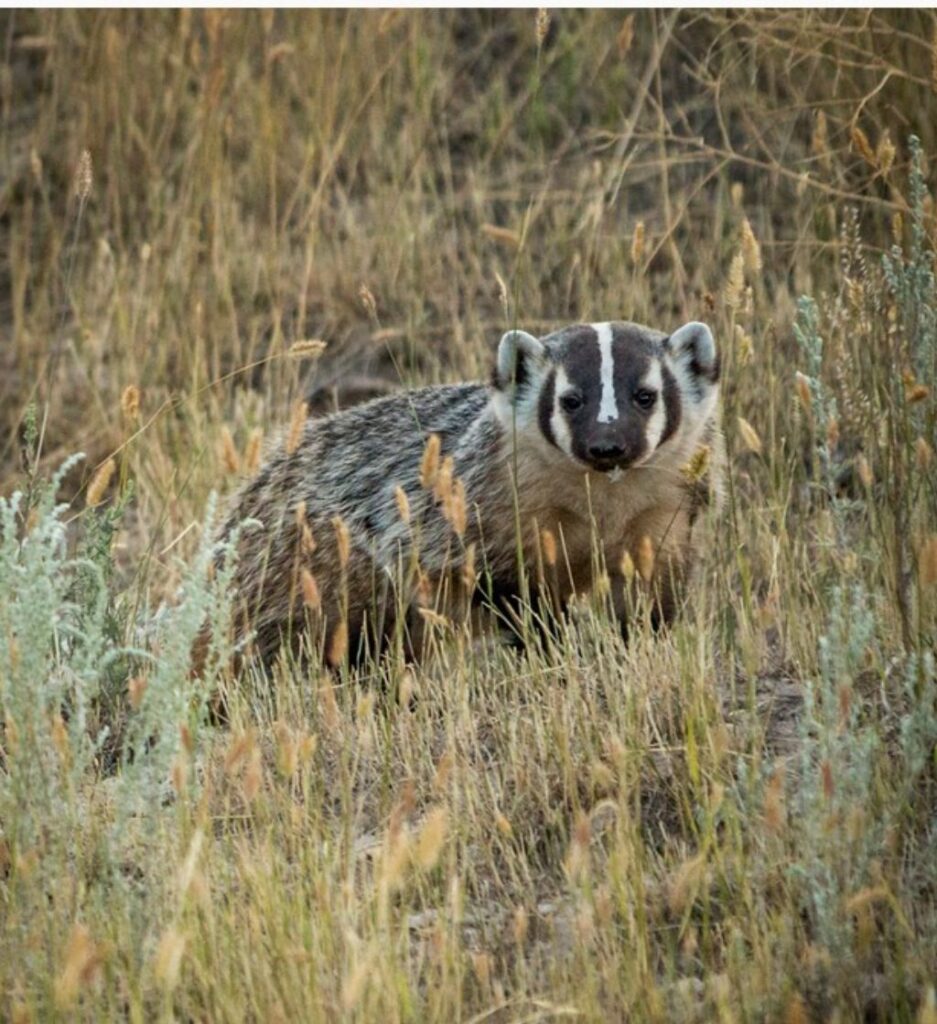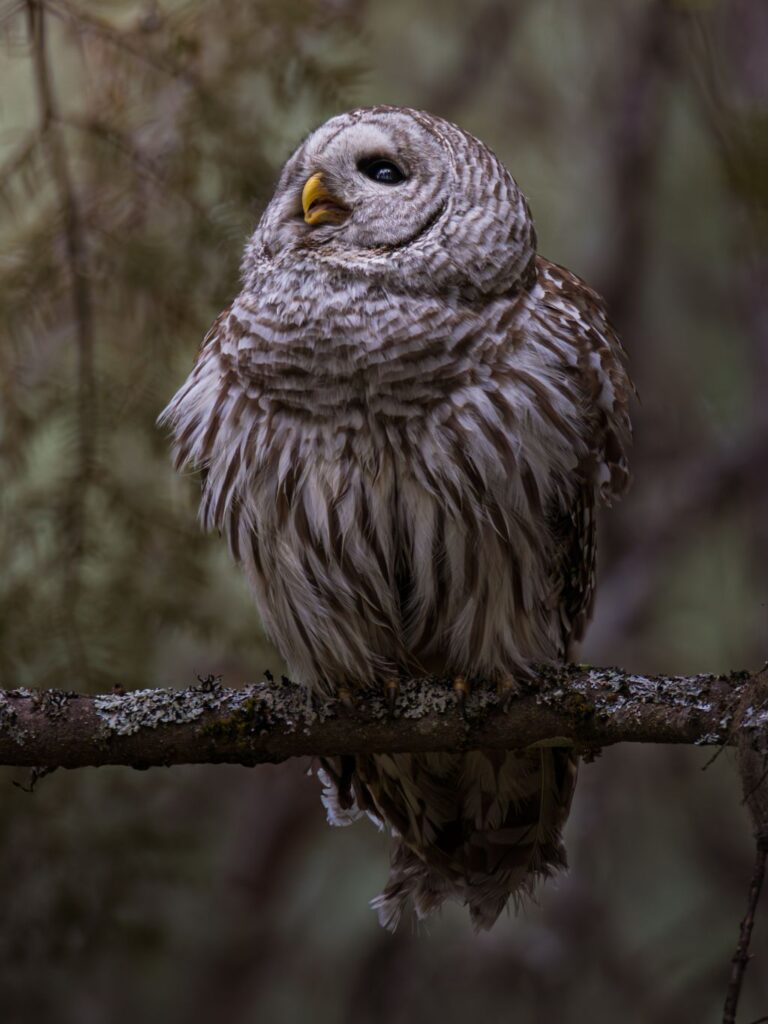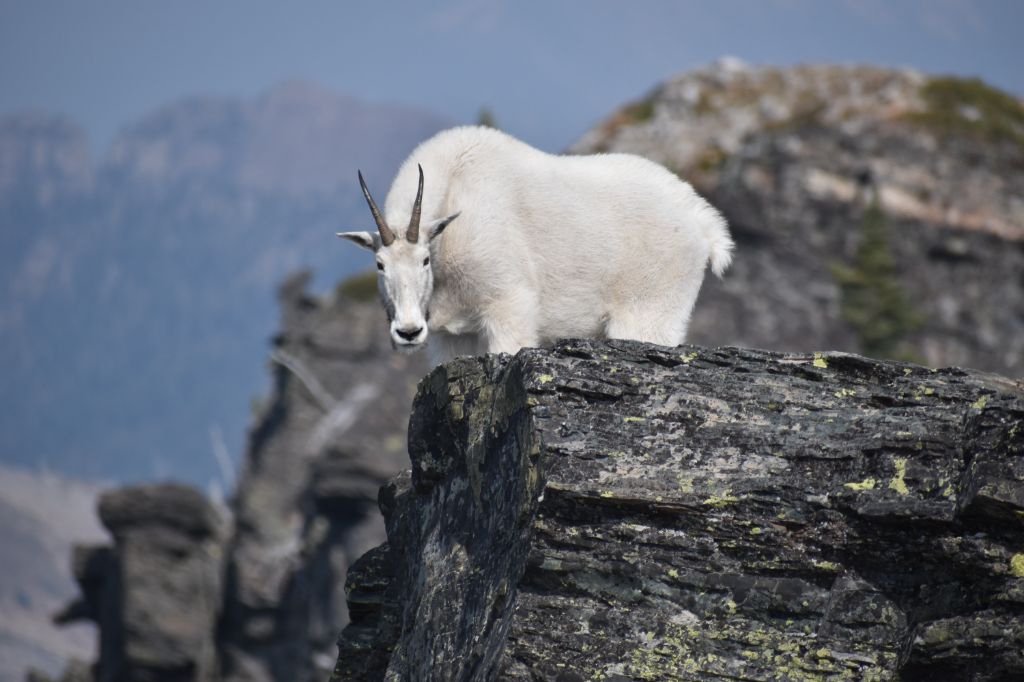Close Encounters of the Wild Kind
From the Summer 2025 Issue
When photographers meet wildlife
Part of life in North Idaho is the thrill of living with a wide variety of wildlife. Sometimes we find them in our back (or front) yards, but more often they’re spotted when we are out and about in the mountains around us, recreating in this paradise we call home. When it happens to a photographer, with camera in hand, we can vicariously experience the thrill. Here we have a roundup of some great shots taken by local photographers, plus stories about some of their favorite close encounters… of the wild kind.
Wild Cats
Renowned wildlife photographer and author Tim Christie was up in Boundary County early one August day “scouting an area looking for deer sign. I was walking along a trail and just above me on a little rock ledge, the bobcat was watching me. I stopped and it stared at me,” he said. “Ever so slowly, it walked along the ledge, stopping several times to look at me. I was able to shoot several images in the encounter. Pretty special experience I might add.”
Mark Vogt was out near Elmira “on a day no different than any other” when “I had a weird kind of eerie feeling. I could feel the hair on the back of my neck standing up, telling me that I was not alone.” Grabbing his camera, “I turned around (and) saw movement out of the corner of my eye. A mountain lion!”
A photographer to his core, Vogt said “My first reaction was hurry, get a picture before it takes off. Then the thought hit me—what’s he going to do? He could be looking at me like I’m a potential lunch.” That didn’t stop Vogt from taking a few pictures. “The lion never took its eyes off me and started sneaking toward me,” which caused Vogt to do what needed to be done—scare or intimidate the lion with big movements and waving arms and yelling. And the lion left. Vogt’s reaction? “I was so excited!” The result was the striking photo on the cover of this issue.
Although cats—particularly cougar—are around us more frequently than most are aware, actually spotting one in the wild is a rare occurrence.
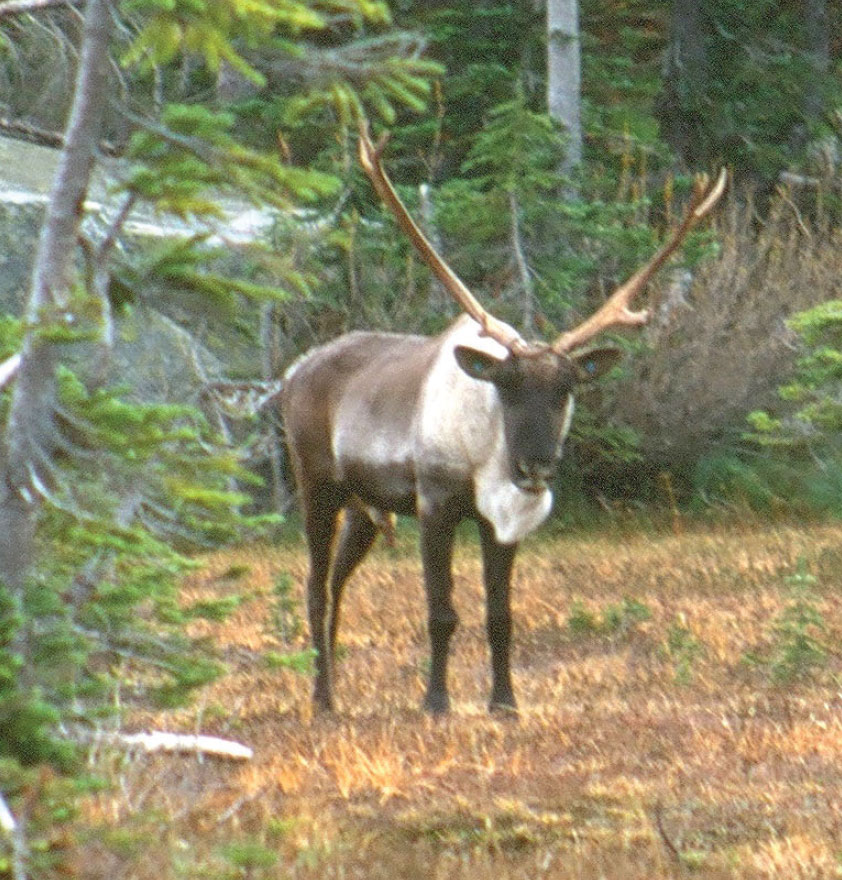
When photographer Kevin Davis captured this caribou photo, they still lived wild here in the Selkirk Mountains.
Caribou
“I had hiked up to Two Mile Lakes,” said Kevin Davis. “In the marshy area between the two lakes we popped out of the trees and there he was. He didn’t seem afraid of us at all.” Davis shared that the caribou was so calm, “it was like we could have walked up to it and given it a pet. But he was pretty antlered up and you know, that really wouldn’t have been a good idea.”
The picture, however, was a great idea, especially as since 2020, there are no longer any mountain caribou to be found in our area. The last of the herd, considered too small to remain genetically viable, were captured and sent to live in Canada, where there are more of their kind.
Perhaps someday the caribou can make a comeback here.
Bear
Mark Vogt’s photo of a bear up close and personal came about thanks to that tantalizing purple fruit that draws many into the woods. “I was hiking around near the trailhead and found some huckleberries. I started picking them and heard a noise. I looked up and this bear was looking right back at me, doing the same thing I was: picking and eating the huckleberries. It was one of the most beautiful black bears I’ve ever seen.” Vogt left the mountains that day with both berries and the photo on the opposite page.
Corey Vogel, who finds all kinds of reasons to get out in our wild areas, was hiking with his border collie, Rowdy, in the Clark Fork area. “Rowdy would trot ahead of me about 20 yards, pause until I caught up, and bound off down the trail again, no matter where we went,” said Vogel. “This particular morning we were after huckleberries. I knew where a good patch was a little further along so that was our destination.
“As I made my way up to Rowdy, and very close to the huckleberry patch, I noticed that he was sitting down in the middle of the trail looking ahead. I wandered up to him and passed him by, but he didn’t budge one inch.” Looking around, Vogel said, “I saw a big ole black bear about 15 feet from me. He looked up from his huckleberry bush, stood up, his eyes widened, and then he proceeded to crash down through the bushes at breakneck speed; falling, rolling and sprinting until he was out of sight about 50 yards below.”
Vogel said the encounter kept both him and Rowdy motionless for a while before they finally continued on… and brought home “a lot of huckleberries.” But no photo.
Tim Christie was attacked by a grizzly bear at Glacier National Park that chased him up a tree, pulled the shoe right off his foot, and left him thinking, “I’m in deep *** here.” Despite the close call, he’s taken over 15,000 photos of grizzlies since. But here in our local area he mostly runs into black bear. He once spent days photographing a black bear that was hanging out at a friend’s property. The first two were productive in terms of photos but on day three the bear took notice of him and charged. Christie knew not to run so stood his ground until the bear got within 10 or 15 feet, then blasted him with pepper spray. “It’s the only time I’ve ever used it,” he said. “The bear skidded to a stop, coughed, then turned around and sped off.
“Yes,” he added, “I did kiss that can of bear spray.”
Spend enough time in the woods and you’ll likely run into a bear eventually. Keep the bear spray handy.
Deer
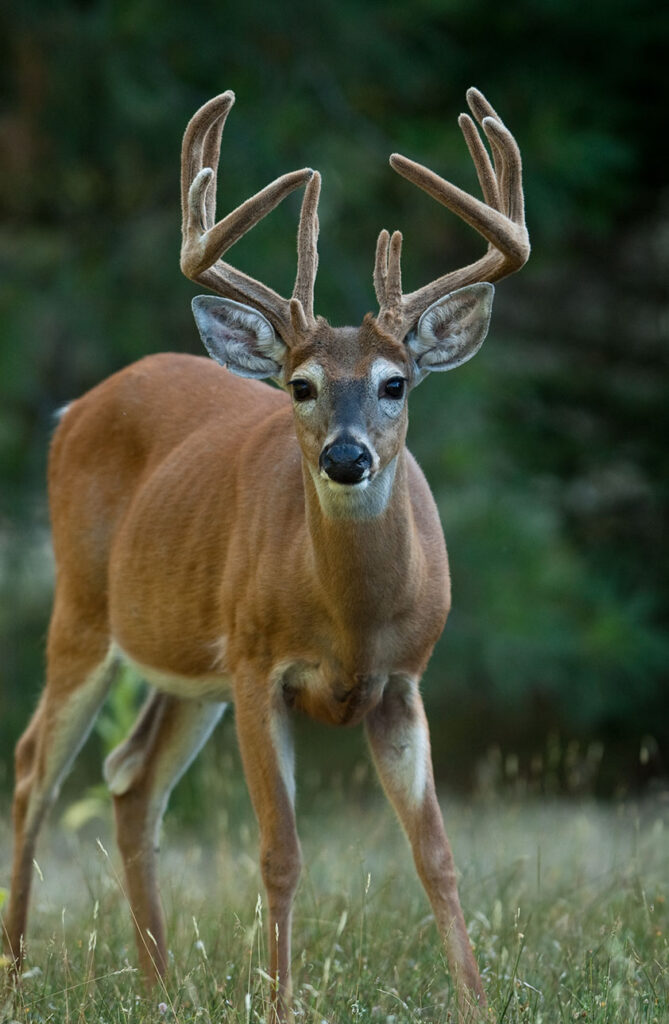
A curious whitetail buck in velvet photographed east of Sandpoint early one morning. Photo by Tim Christie.
Tim Christie also got up close and personal with some whitetail deer when he spotted a doe standing in the middle of the road. Next to the road two bucks were determining who would have the honor of courting said doe. Christie turned his back on them to photograph the doe when he heard blowing behind him. Turning to look he realized the victorious buck was now headed for the doe with Christie directly in his path. “I had time to move about three steps before he went by me,” he said. “He was no more than two or three feet away.” Luckily, the buck was laser focused on the doe and decided not to teach Christie a lesson about getting between a male and his true love.
Some of the most common wildlife we see in these parts, deer can be a nuisance… particularly given their tendency to dart into roadways at the last minute. Be deer aware when driving. And when they wander into your yard to decimate your landscaping, remember that many people not lucky enough to live here have never seen them in the wild.
Moose
Matthew Jorgensen’s capture of a mama and baby moose was serendipitous. “I was driving to spend the day fly fishing a small stream. On my way, I noticed the moose eating in a little marsh patch and immediately pulled over. Luckily, I had brought my camera with me just in case an opportunity like that came about. I watched them for a while as they gradually fed across the marsh. Although the fishing wasn’t the best that day, those two sure made the adventure a success.”
Mark Vogt also ran into a mama moose with a young one early one morning while hiking the trail to Scotchman Peak. “They were fun and very curious, followed me up the trail for a bit,” Vogt said. He did, however, keep walking, understanding that moose can be unpredictable, especially when they have a little one to protect. Hanging around is not a good idea.
Moose are so common, they’re often spotted hanging out in town.
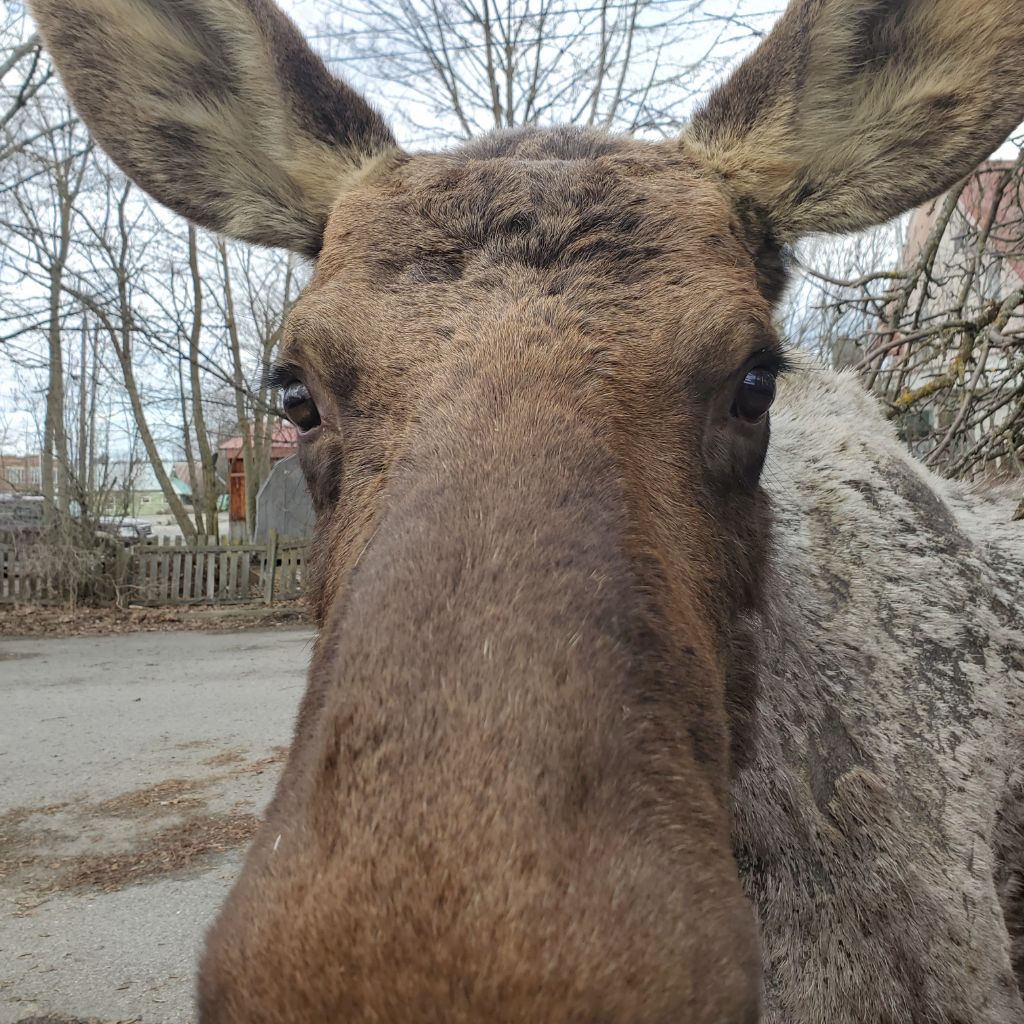
A handy fence offered both protection and opportunity for this close shot of a moose. Photo by Sue Otis.
Badger
A really rare sighting occurred when photographer Amy Peterson was hiking with a friend. “[Walking] down a remote dirt road with my friend, who was busy snapping wildlife photos, I noticed a sudden movement ahead. Curious, I lifted my camera and zoomed in, only to be amazed by the sight of three badgers walking single file down the trail, headed straight towards us. It was the first time I had ever seen badgers in the wild, and to this day, I haven’t encountered them again. We made sure to keep our distance, but as soon as they spotted us, they quickly scurried off into the brush. I managed to capture a few photos of the rare moment before they disappeared, a fleeting encounter I’ll never forget.”
Odds are high you’re never going to see a badger in the wild.
Elk
“One morning, I recall hiking up a steep mountainside just before dawn with my husband when we caught a glimpse of an elk in the thick open timber,” said Amy Peterson. “We froze in our tracks, trying not to alert her to our presence. For what seemed like forever, we stood completely still, balancing and holding our breath, hoping not to spook her and give away our position. After what felt like half an hour, the elk slowly moved down the mountain, out of sight. We continued on our way, feeling both the discomfort of standing still for so long and the satisfaction of the quiet encounter.” Peterson has taken many photos of elk over the years, but said, “That moment taught us a valuable lesson in patience and awareness—wildlife is all around you, but it’s easy to miss if you’re not paying attention. It’s a reminder of how rewarding these moments truly are.”
You may run into elk in the wild, but unless their favorite eating spot is nearby, it won’t happen often.
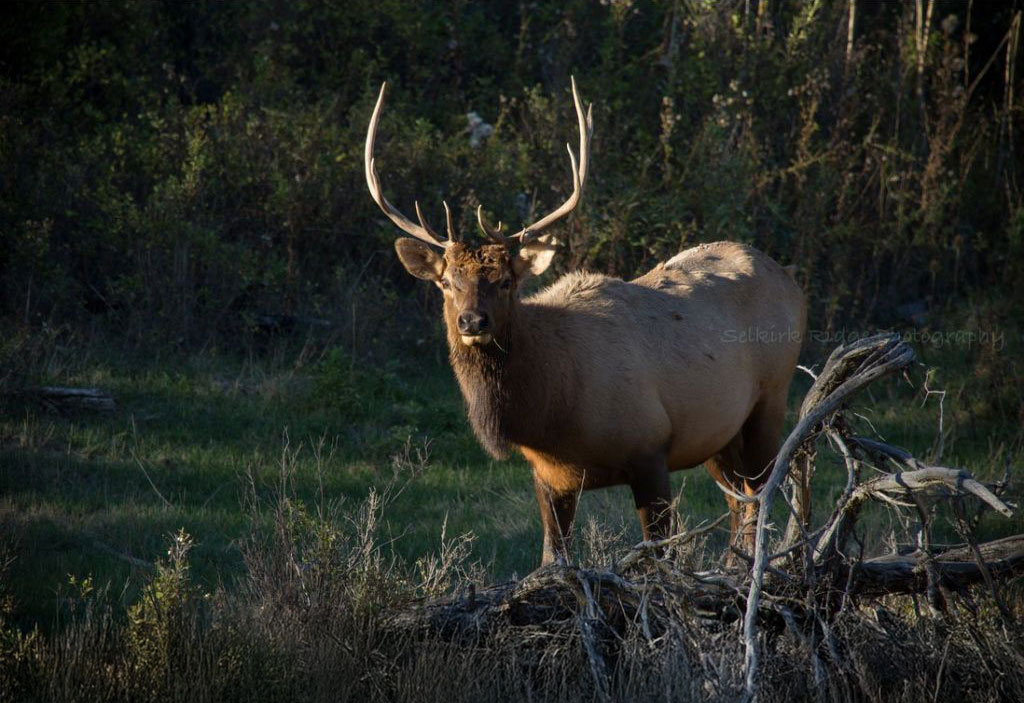
Elk are not as easy to spot as some other ungulates in the area, but they’re still fairly accessible. Photo by Amy Peterson.
Barred Owl
When photographer Dawson Owens spotted a barred owl, he instantly reached for his camera… only to realize he’d left it in his truck. After rushing to grab it and returning, “I started to panic because the owl moved locations, and I had no idea where it went,” he said. “So, I took a quick moment and prayed. About two minutes later that owl landed in a tree right next to where I was standing!”
Owls of all types make this area home. You’re more likely to see one at dusk or dawn, when they are most active, and during winter and spring, when there are fewer leaves to hide them.
Mountain Goats
In summer mountain goats are some of our large wildlife that can most predictably be spotted, but they don’t necessarily make it easy. Up-close experiences on Scotchman Peak require a strenuous four-mile uphill hike with 3,700 feet of elevation gain. That’s where Chris Bessler spotted this fellow during a hike with wife Sandy. “Basically, he was utterly unconcerned about us,” said Bessler, adding that, for the safety of both parties, hikers should never approach the goats. “That doesn’t mean the goats won’t approach you,” said Bessler. He captured a video clip of one coming a bit close for comfort; you can watch it here.

